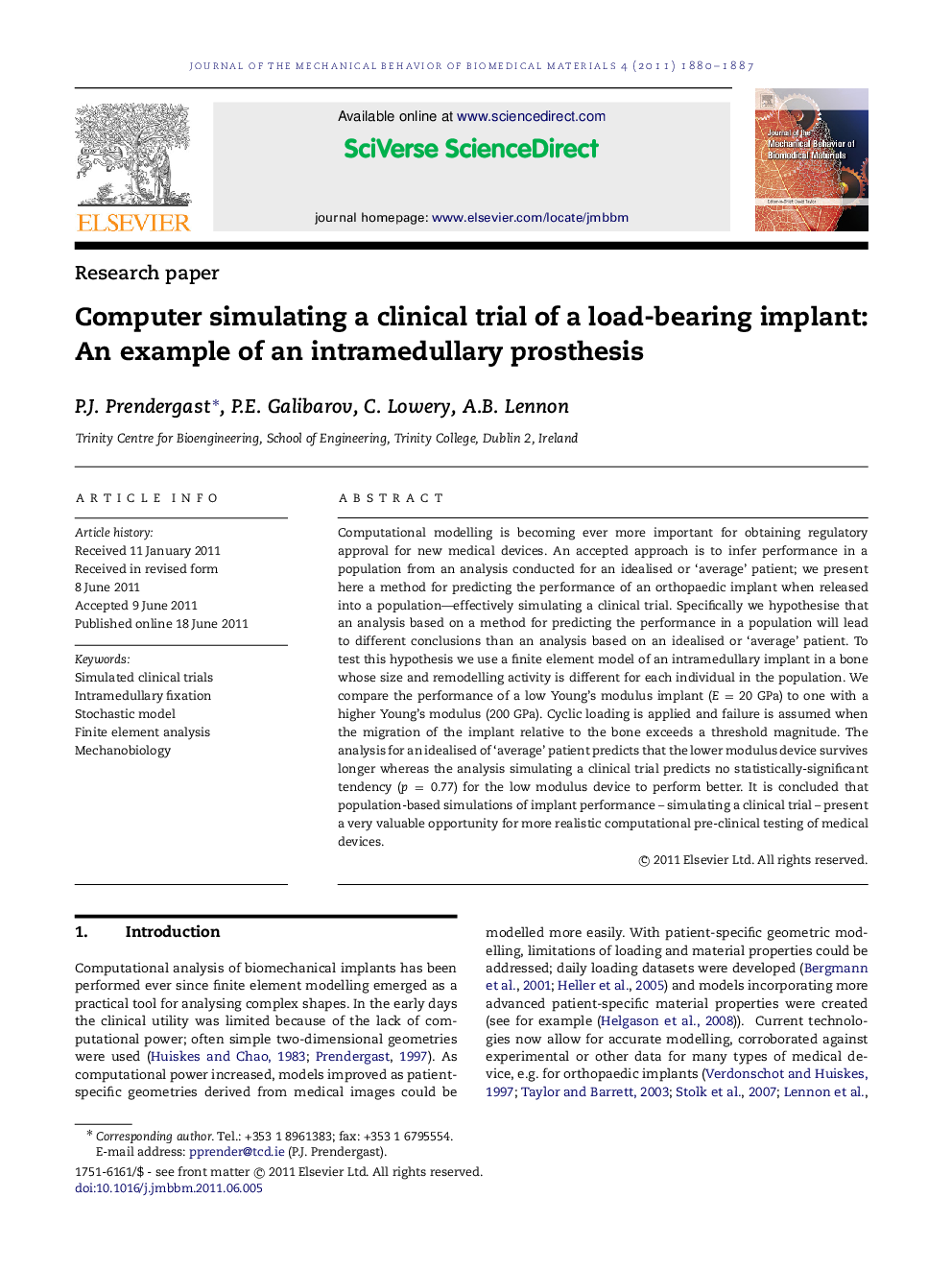| Article ID | Journal | Published Year | Pages | File Type |
|---|---|---|---|---|
| 7209541 | Journal of the Mechanical Behavior of Biomedical Materials | 2011 | 8 Pages |
Abstract
Computational modelling is becoming ever more important for obtaining regulatory approval for new medical devices. An accepted approach is to infer performance in a population from an analysis conducted for an idealised or 'average' patient; we present here a method for predicting the performance of an orthopaedic implant when released into a population-effectively simulating a clinical trial. Specifically we hypothesise that an analysis based on a method for predicting the performance in a population will lead to different conclusions than an analysis based on an idealised or 'average' patient. To test this hypothesis we use a finite element model of an intramedullary implant in a bone whose size and remodelling activity is different for each individual in the population. We compare the performance of a low Young's modulus implant (E=20GPa) to one with a higher Young's modulus (200 GPa). Cyclic loading is applied and failure is assumed when the migration of the implant relative to the bone exceeds a threshold magnitude. The analysis for an idealised of 'average' patient predicts that the lower modulus device survives longer whereas the analysis simulating a clinical trial predicts no statistically-significant tendency (p=0.77) for the low modulus device to perform better. It is concluded that population-based simulations of implant performance-simulating a clinical trial-present a very valuable opportunity for more realistic computational pre-clinical testing of medical devices.
Related Topics
Physical Sciences and Engineering
Engineering
Biomedical Engineering
Authors
P.J. Prendergast, P.E. Galibarov, C. Lowery, A.B. Lennon,
